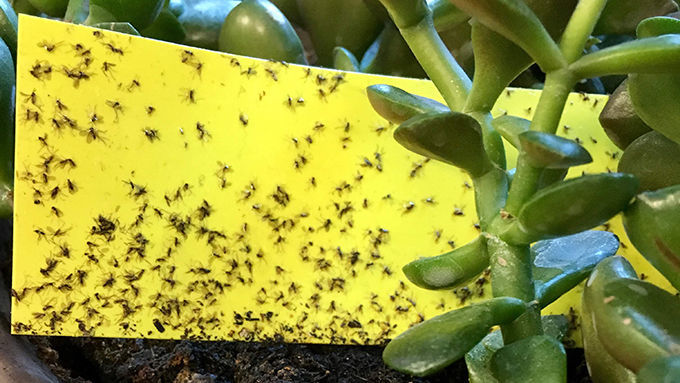Back Home by Chris Hardie
» Download this column as a Word document
» Download photos that accompany this story
» More columns by Chris Hardie
» Chris Hardie’s headshot
If misery and company were a recording duo, they would have held the top of the Midwest charts for months now.
From the polar vortex to record snow, rains and flooding, we’ve had a nonstop onslaught of top misery hits. Finally, when it seems like we may catch a break with some warm weather to tackle all those long-delayed outside projects, we are nailed by gnats.
As they say, the hits just keep on coming.
“I would say it’s approaching historic levels,” said John Walz, coordinator of black-fly control with the Metropolitan Mosquito Control District in Minneapolis-St. Paul, Minnesota.

Just like K-Tel vinyl, gnats come in many different varieties. Some are merely nuisance gnats that swarm at our heads in clouds and attack eyes. Others are biters who want human blood — like the black flies called buffalo gnats. Other biting gnats are called midges, no-see-ums, punkies or sand flies.
Gnat nitpicking aside, they have descended upon the upper Midwest like a plague upon the pharaoh’s followers. Going outside will test a person’s mettle as much as listening nonstop to “Seasons in the Sun,” with the end result being the same — running away screaming.
Apparently, our previous misery from the flooding is to blame for the prolonged entomological misery. The flowing waterways provide plenty of breeding ground for gnats. Black flies attach to the bottoms of rivers and streams. Once hatched they fly into trees and attack.
There are biological treatments to help control the larvae but flooding delayed that in the Twin Cities area. That allowed the first generation of bloodthirsty black flies free to roam the skies in search of prey.
Most of the gnats on our farm are more interested in our eyes than in blood, but it’s been a challenge working outside. The deer flies — which are technically not gnats but are a biting nuisance regardless — are also out in full force.
Mowing the lawn was also a challenge recently when my riding mower went down for a week; I blew the belt on the riding deck. In my effort to keep the yard looking tidy, I mowed a good chunk one day with the walk-behind. I wore my old straw hat to protect against the sun and against gnats.
By the end of the day I had walked 9.9 miles, according to my phone pedometer. And I didn’t even finish the yard.
The good news is that the riding mower is now repaired.
Additional good news is that gnat season doesn’t last all year.
The bad news is mosquito season is just ahead.
Another season is here — haying time. I saw many local farmers take advantage of the recent stretch of warm and dry weather by putting up their first cutting. I spotted one farmer in Trempealeau County who was using a piece of forage equipment that I should invest in — a hay tedder.
Tedders are used after the hay is cut and before it’s raked. The tedder has forks that lift and fluff the hay to help it dry faster and more evenly. The hay is then raked into windrows. Because it seems like having a few hot and dry days in a row is more and more rare, anything that can help reduce hay drying time would make sense.
Naturally, I didn’t have the chance to take advantage of the haying window, because the stars for haymaking didn’t align with my schedule.
I’m certain misery will find my company very soon as I try to put up my hay.
Chris Hardie spent more than 30 years as a reporter, editor


